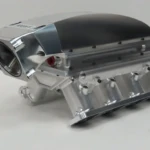Revolutionizing CNC Machining: The Rise of Composite Robots in Loading and Unloading
In the ever-evolving world of Computer Numerical Control (CNC) machining, the concept of loading and unloading complex parts has long been a challenge for manufacturers. The manual handling of heavy, delicate, and intricate components has often led to inaccuracies, damage, and increased production costs. However, the emergence of composite robots is poised to transform this industry by introducing a new era of efficiency, precision, and reliability.
The Need for Innovation
Traditional CNC loading and unloading processes have been plagued by several limitations. Human error, equipment damage, and the need for laborious manual intervention have made it difficult for manufacturers to achieve optimal production rates and product quality. Moreover, the increasing complexity of CNC machines, combined with the growing demand for high-precision machining, has created a pressing need for innovative solutions.
The Rise of Composite Robots
Composite robots, comprising of a combination of mechanical, electrical, and software technologies, have been designed to overcome the limitations of traditional loading and unloading processes. These cutting-edge machines boast advanced features such as:
- Programmable Motion: Composite robots can be programmed to perform complex movements, allowing for precise handling of delicate components and accurate placement.
- Sensor Technology: Integrated sensors enable the robots to detect and adapt to various machine conditions, ensuring optimal performance and minimizing the risk of damage.
- Increased Flexibility: Composite robots can be easily reprogrammed to accommodate new machine configurations, reducing downtime and increasing overall productivity.
- Real-time Monitoring: Remote monitoring capabilities allow manufacturers to track production and make adjustments as needed, ensuring maximum efficiency and quality.
Advantages of Composite Robots
The implementation of composite robots in CNC loading and unloading has led to a myriad of benefits, including:
- Increased Accuracy: Composite robots significantly reduce the risk of human error, resulting in improved part quality and reduced scrap rates.
- Enhanced Productivity: By automating labor-intensive tasks, composite robots free human operators to focus on higher-value tasks, increasing overall production efficiency.
- Reduced Downtime: Composite robots can operate around the clock, minimizing production downtime and increasing equipment utilization.
- Cost Savings: Reduced labor costs, lower equipment damage, and minimized production delays result in significant cost savings for manufacturers.
- Improved Machine Life: Composite robots can operate in harsh environments, reducing the risk of equipment damage and extending machine lifespan.
Industry Adoption and Future Outlook
As the CNC industry continues to evolve, the demand for composite robots is likely to increase. Manufacturers are already experiencing the benefits of these innovative machines, and adoption is expected to accelerate in the coming years. With the potential to transform the way we load and unload complex parts, composite robots are poised to revolutionize the industry, enabling manufacturers to achieve new levels of precision, efficiency, and profitability.
Conclusion
The introduction of composite robots in CNC loading and unloading has marked a significant milestone in the evolution of manufacturing technology. By combining advanced mechanical, electrical, and software capabilities, these machines are poised to transform the industry, driving accuracy, efficiency, and cost savings. As manufacturers continue to push the boundaries of innovation, composite robots will play a vital role in shaping the future of CNC machining, enabling the production of high-quality parts with unprecedented precision and reliability.










































